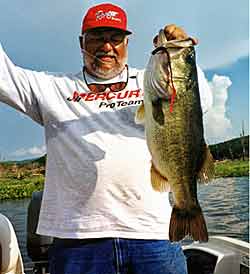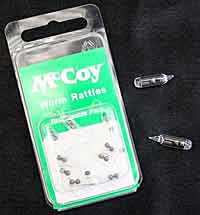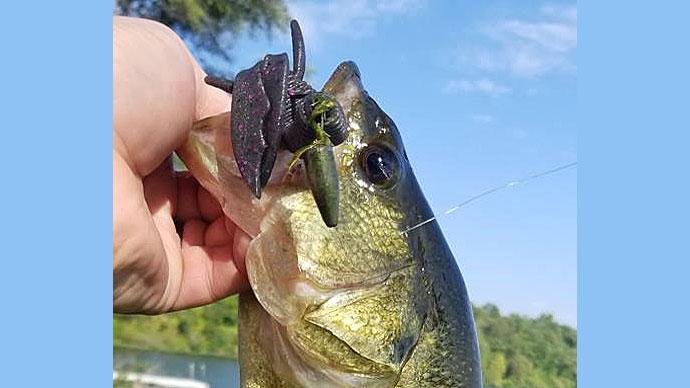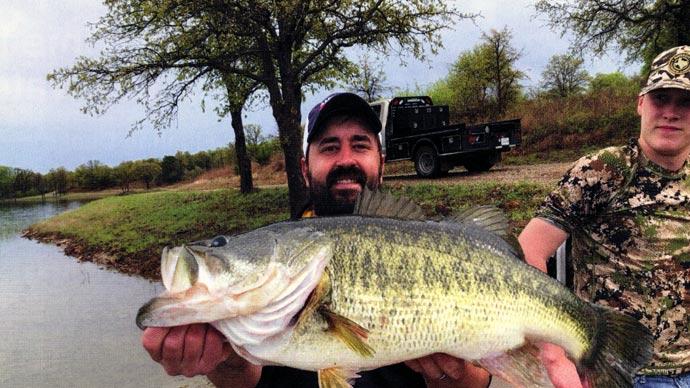
For a sight-fishing fish like a bass, the senses of smell and hearing are essential to let the fish know that food is around. Once a bass is alerted to the potential food, it can get closer and may or may not decide it is food. According to Dr. Keith Jones, bass are not very good at localizing sound. Sound does more to alert them, after which they switch to visual to hone in on the possible food source.
Dr. Jones, a bass biologist, says that bass have just a moderate sense of hearing, especially at 100 to 200 cycles per second. Humans can detect sounds from 20 to 20,000 cycles per second, but bass are petty deaf at over 500 Hz, Jones says. This means that they don’t hear high frequency sounds. Still, bass do use their hearing for hunting. Shaking a worm puts off vibrations that displace water. Those waves are felt by the lateral line, not heard by the bass. The lateral line is sensitive to very slight motions. Jones believes these vibrations attract bass when a worm is shaken, not any high-frequency sounds produced by beads and metal. Sound carries five times better in water than in air, so using sound can improve your catch ratio.
Dr. Jones has studied sound and says he always suspected that fish couldn’t hear brass and glass until they were close. Once a fish is close, he thinks the brass and glass could alter the fish’s response. Bass are extremely curious and use their mouths as we use our hands. They have to pick things up to find out what they are. However, Jones says that too loud a sound will drive bass away.

Even though worms are not part of a bass’s natural diet, they’ll eat plastic worms. Research at Pure Fishing shows that bass don’t necessarily seek out the most natural object. Their brains don’t work that way. But even a rough minnow shape interests them. Even unnatural sounds and frequencies may make bass bite, maybe out of curiosity. However, they are less likely to bite the same thing twice just out of curiosity. There must be some food confirmation or stimulus for them to keep after it. Softness, scent, taste – all those characteristics are taken in by the bass and generalized to similar objects. In other words, bass learn.
In studies in tanks, crankbaits were run around and around past bass. Fish would bite them. By the fifth time around, the bass knew that crankbaits weren’t food and wouldn’t bite them. Two weeks later, half the fish were tested on crankbaits again. They still wouldn’t respond to them. They tested the fish for three months with pretty much the same results. Jones thinks they remember for life. Spinnerbaits and crankbaits seem to be the easiest to remember, Jones says. It’s harder for bass to make generalizations about soft baits.
The guys at Hydrowave have a system that lets you get a speaker into the water and play various sounds to attract bass. Their basic system ($399.99) includes six recordings: Feeding Frenzy, Schooling, Passive Finesse, Fleeing Bait, Bait Frenzy, and Bait Panic. A lot of pros swear by this system.
If you don’t have the 400 bucks for the Hydrowave, don’t despair. You can still use sound and vibration to your advantage. Start with avoiding a lot of crashing around in the boat. Dropping stuff, banging boxes shut and stomping around on deck all send sound and vibrations through the water in every direction. These sounds probably don’t sound like a dinner bell to the fish and most likely come under the heading of those loud sounds that Dr. Jones says will drive bass away.

Good sounds/vibrations mimic the sounds normal bass prey make as they move around their aquatic home. Spinnerbaits are an excellent example of baits that make a sound vibration and are proven by fish catchers. A fish can feel the movement, and when he gets close and sees that general shad shape, he eats it. Popping a Rico across the surface or walking a big Spook mimics a school of shad in a frenzy, splashing across the surface. We’ve all seen that.
Good sounds can come from the bottom, too – jigs and worms hopped or dragged across the rock can be heard and felt by bass. Experiment with different sinkers: brass and tungsten, steel and lead – they all make a different sound and vibration when they smack a rock. Don Iovino was one of the first to take advantage of sound when bass fishing – his brass and glass doodling technique uses shaking to add not only vibration to the water but also the clicking sound of crawdads. Once a bass is drawn near by the vibration, he can hear or feel the clicking.
You don’t have to stop at hearing – pick lures that look like the local prey. Matching the hatch isn’t just for fly fishermen. And don’t forget about the smell – almost all the pros use some scent if only to mask offensive (to bass) smells from the bait being handled by humans. Re-apply every few casts. Use your knowledge of how bass hear to draw them in, then seal the deal with sight and smell.




